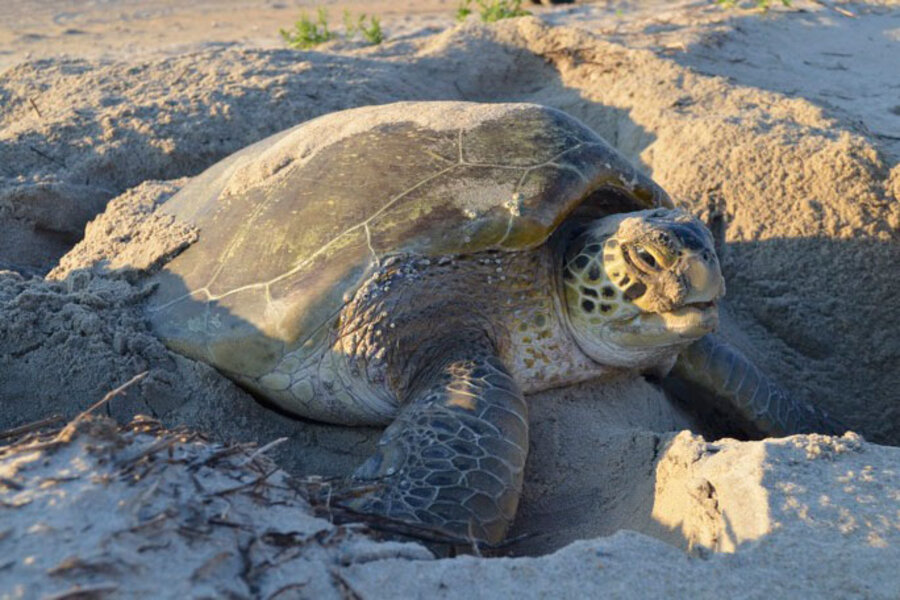Iconic sea turtle nesting season off to a great start
Loading...
On the beaches of Florida, Georgia, and the Carolinas around this time every year, a band of volunteers comb the sand at daylight in search of telltale flipper tracks and ping-pong-ball-sized orbs. This army of beachcombers is on the hunt for the nests of loggerhead sea turtles to count their eggs. And this season, they could have reason to celebrate.
After nest totals for the federally-protected turtle neared or surpassed record numbers last year, 62 nests were recorded as of Monday on beaches in Georgia, South Carolina, and North Carolina.
"If we continue our trend, we could have 600 nests this year," David Hoffman, a National Park Service biologist, told the Associated Press about nests on Georgia's Cumberland Island alone. "You just can't tell until it's over."
Dr. Hoffman and his team of interns recorded 583 nests on the federally-protected island last year. For the third time in a row, Georgia's first nest was found on the island.
Floridian beaches are often covered with the most nests each year by far. Last year, 89,295 were recorded there. But the state doesn't keep a running, season-long tally of the number of nests on 216 reporting beaches.
The success of the sea turtle, which can grow upwards of 300 pounds, is one silver lining in the marine world, as more and more organisms become threatened due to human activities and climate change.
Yet the loggerhead sea turtle might owe its vitality to its becoming federally protected after the species was listed as threatened through its range in 1978. Its relative, the green sea turtle, experienced a similar resurgence in Florida and the Mexican Pacific because its species status raised attention to conservation efforts, as The Christian Science Monitor reported in April.
Now, a loggerhead mother's journey onto these southern beaches ushers in summer much like the change of foliage marks the fall in New England. Yet, while fall colors are more or less a constant, the amount of nests that cover the beaches varies in three year cycles.
The turtles don't lay eggs every year, so nesting often fluctuates in cycles of two strong years followed by a decline. Georgia and the Carolinas saw numbers drop in 2014, only to rebound last year. Georgia recorded 2,292 nests in 2015, and South Carolina and North Carolina reporting numbers just shy of that number.
Experts said this year's nest counts don't predict what the final count will be. But biologists and volunteer nest trackers are optimistic.
This report contains material from the Associated Press.







